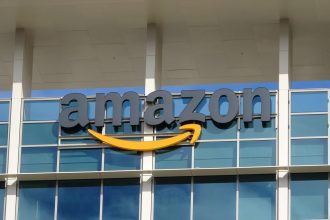What one word best describes the last three years in retail? There are many candidates. Not all of them printable. But I would say “uncertainty” has to be up there.
From the pandemic to supply shortages to inflation, our current era has been characterized by intense volatility. Disruption has been a constant drumbeat.
And that’s had an inevitable impact on consumer attitudes, shopping behaviors and retail strategies.
Accenture’s
ACN
So uncertainty has become the norm for many consumers. And that’s causing some to enter “fight or flight” mode. They’re looking to hunker down and cut back. With obvious implications for their retail spending.
The resilient consumer
But there’s another word we might choose. Resilience.
We see some consumers demonstrating a remarkable ability to adapt to uncertainty. They’re actively seeking out ways to protect and control what matters most to them. They’re dealing with disruption on their own terms.
One of the reasons is a growing optimism about their personal finances. The data shows a large majority of consumers – almost three-quarters – expect their disposable incomes to either rise or remain stable over the next year.
That’s great news. It’s also encouraging for consumer spending. In more than half of the 15 categories the survey looked at, for example, more consumers said they expect to increase their spend, rather than reduce it.
Resilient values
Of course, these resilient consumers aren’t blind to the state of the world. Over half of them (56%) expect the years ahead to be a struggle. And two-thirds are exercising greater caution in their decision-making.
However, the data shows a clear sense of optimism. Many of this group (44%) believe recent challenges have created opportunities. And a majority (61%) say they’re actively seeking new experiences or adopting new habits to improve their lives.
Interestingly, consumer resilience is also evident in the way their values are being maintained. Take sustainability. While the national economy takes the top spot in terms of consumer worries, the environment ranks second, ahead of personal finances.
The survey also reveals the overwhelming majority of consumers have embraced sustainable shopping habits over the past year. These include buying only what they need, bringing their own bags to store, choosing goods that last longer, repairing or upcycling, and purchasing reusable or refillable products.
The need for nuance
However, given the level of volatility in the market, it’s important not to overgeneralize or oversimplify when it comes to predicting consumer behavior.
Persistent inflation, high interest rates, and income uncertainties could further challenge consumer resilience in the coming months. And retailers must prepare for sharp and sudden shifts in consumer behavior.
Already, we see wide variations in consumer attitudes. For example, while some are proactively taking control of their spending, others are simply running up credit card debt as a means of dealing with what they see as overwhelming forces.
What’s interesting is these threads cut across traditional demographic segments. So, in devising their engagement strategies, retailers will need far more granular insights from their customer data and analytics.
That means delving deeper into the intricacies of each individual — their current outlook, hopes for the future, income trajectory and the impact on their shopping behavior.
Those insights will be crucial in providing the right product, the right experience, the right price, in the right places, at the right moments, through the right channels.
Resilient retailing
What does this mean for retail strategies for the next eighteen months? One overarching objective should be to take inspiration from consumers’ ability to deal with adversity, weather shocks, and adapt to ongoing uncertainty.
Retailers should look to mirror this resilience. That means taking a holistic approach to understanding consumers and committing to a continuous strategy of reinvention. This will enable them to adapt and accelerate swiftly as disruptions arise.
Dynamic data-driven pricing strategies, targeted marketing and loyalty programs, and stress-testing profit and loss against various spending slowdown scenarios are just a few examples of how companies can stay ahead in this ever-evolving market.
Converging objectives
These consumer motivations have implications beyond retail, of course. Behaviors are aligning across a whole range of industries, including health, leisure, travel, and consumer goods, as well as retail.
Any company that directly interacts with consumers should therefore be looking to develop offerings that encompass all of their priorities and values—whether they’re economic, personal, societal or environmental—rather than asking them to make trade-offs.
It’s about seeing the consumer as a fully rounded human being, not a faceless member of a demographic segment. Then using this granular insight to redefine products and experiences. And backing it up by reinventing how the business works — so everyone is aligned around fulfilling the full span of people’s needs.
That’s how retailers can build their own resilience — and drive profitable growth — in a market that shows no sign of settling down anytime soon.
Read the full article here





